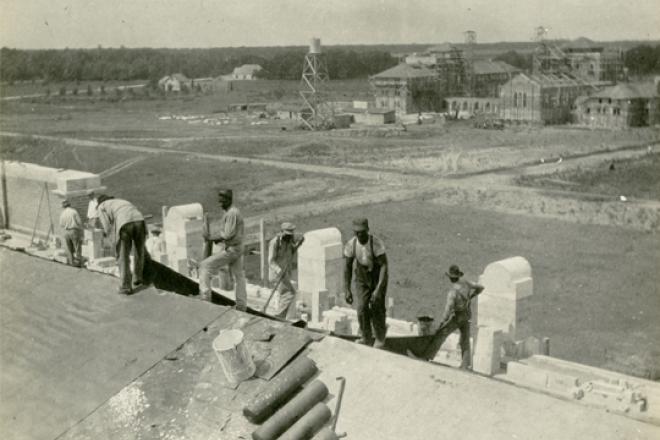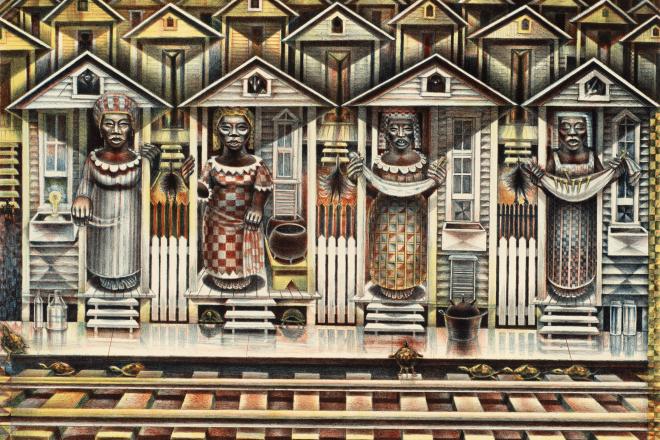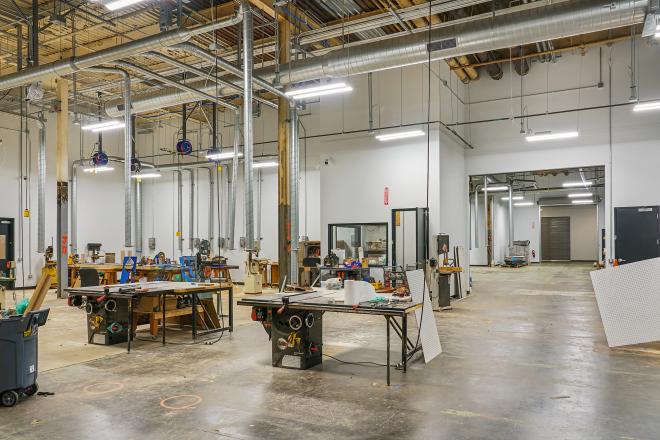Houston has always had a tricky relationship with historic preservation. Unlike numerous other global cities, Houston often allows its older structures to grow over with weeds or be demolished, eventually making way for new development. Traditional preservationism would imply that this approach is morally wrong: not to preserve architectural history is to lose it forever.
Yet both the new issue of MONU: Magazine on Urbanism and a recent show called Cronocaos, curated by Rem Koolhaas at the New Museum in New York, question our common approach to preservation. Should old buildings be preserved in a pristine state forever, or should they be allowed to remain an active part of a city, even if they continue to deteriorate from use? Has historic preservation done more damage to cities than good, by airbrushing and sanitizing them for tourists and the wealthy, while making them less accessible and useful to citizens? The image portrayed by Koolhaas is of preservationists cleaning facades, scrubbing interiors, and then putting up metaphorical velvet ropes that prevent users from getting too close to the architecture---"please do not touch. Even clean hands can harm the art....etc." Even the term preservation implies an object sealed off from the effects of time, petrified, as it were.
In his work and in his New Museum show, Koolhaas attempts to re-set our thinking regarding preservation. A few years back, in his competition entry for the deteriorating Hermitage museum in St. Petersburg, he proposed letting the sprawling museum continue to exist in a state of decay. He suggested, in effect, that the museum do nothing. Peeling paint and piled dust would remain as an artifact of aging and the toll of time. Artworks would hang within the ruin. The entire museum would exist as a marker of its own placement in history. The proposal ran counter to the cautious, pristine approach advocated by traditional preservationists. Nicholas Ouroussoff says, "in the realm of preservation, as in so much else, we seem to have become a world terrified of too much direct contact with reality."
As a city, Houston seems to support Koolhaas's approach, a kind of a counter-argument to rehabilitation. Where other cities often preserve even buildings of minor importance, Houston allows or encourages the demolition of structures that have fallen out of use. The result is an urban fabric full of vacant lots but also potential. This lack of planning (and of zoning) creates unexpected diversities, not only demographically but architecturally. Many Houstonians lament the fact that we don't have better protections for our historic buildings, both notable and marginal. But maybe Houston doesn't need the same preservationist approach followed by Paris or Philadelphia or New York. Perhaps it needs an approach to history tailored to this city: not the blanket preservation of historic structures but, as Koolhaas implies, a better sense of what we're willing to give up. This would entail a theory of preservation's opposite.
The Dutch urbanism journal MONU: Magazine on Urbanism raises similarly provocative arguments. This month's issue, Editing Urbanism, questions the ways in which cities deal with their existing fabric. Koolhaas has an article here that covers much of the same ground as his Cronocaos show. In another essay, Felix Madrazo argues that architectural publications are to blame, by not publishing the work of preservationists and designers interested in renewal. And Lucas Dean proposes a kind of programmed urban death, in which parts of cities would be allowed to constantly undergo a process of rejuvenation.
Here's MONU editor Bernd Upmeyer commenting on this month's issue:
Despite the current urgency to deal with the enormous potential of the already-existing urban material as Urban Editors, there seems still to be a lack of interest in topics such as urban and architectural restoration, preservation, renovation, redevelopment, renewal or adaptive reuse of old structures among architects and urban designers. But ignorance in this matter can only be dismissed as socially irresponsible and economically and culturally unacceptable. But what might the reason be for the prevailing ignorance? Who is to blame? Why is Urban Editing considered so utterly unattractive?
You can browse the whole of MONU issue #14 on Youtube.










